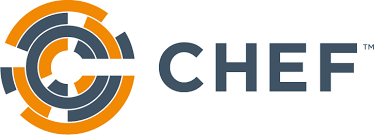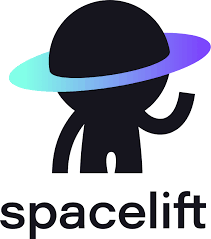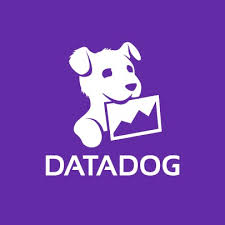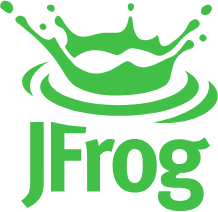Look, nobody wakes up excited to write another line of YAML just to spin up a VPC. You’ve got features to build, bugs to squash, and a product to ship. The best DevOps productivity tools flip the script: you say what the app needs-CPU, database, networking-and they handle the cloud mess behind the scenes. No custom scripts, no PR reviews for security groups, no “why did this break in staging again?” moments. Here’s the shortlist of platforms that actually move the needle for fast teams.

1. AppFirst
AppFirst was built because provisioning infrastructure often becomes a slog that pulls developers away from what they actually care about – shipping code. Instead of wrestling with Terraform scripts or chasing down cloud-specific quirks, users simply lay out the basics of their app, such as compute power, database type, or networking setup. From there, AppFirst takes care of spinning up the entire stack across AWS, Azure, or GCP, with logging and alerting integrated from the start. It is all about keeping the focus on the product, not the underlying plumbing.
Switching clouds or scaling up does not require a full rewrite, as AppFirst abstracts those layers while supporting SaaS or self-hosted deployment for compliance needs. Audit trails track changes centrally, and costs are displayed broken down by app or environment, eliminating the need for extra spreadsheets to monitor spending. Though still in its early days and launching soon, AppFirst aims to eliminate the bottlenecks that slow down fast-moving teams.
Key Highlights:
- App definitions drive automatic provisioning of compute, databases, and messaging
- Cross-cloud support for AWS, Azure, and GCP with native best practices
- Built-in observability covers logging, monitoring, and alerts
- Self-hosted option alongside managed SaaS for flexibility
Pros:
- No need for infra code knowledge to get started
- Centralized views make auditing and cost tracking straightforward
- Handles multi-cloud shifts without app changes
Cons:
- Still pre-launch, so access means joining a waitlist
- Relies on descriptive inputs that might need tweaking for edge cases
- Self-hosting adds setup overhead for some setups
Contact Information:
- Website: www.appfirst.dev

2. Chef
Chef handles infrastructure and app configs through automation that keeps everything consistent no matter where it runs – cloud, on-prem, or mixed setups. Users write policies in a readable format that scales across environments, covering compliance scans and workflow orchestration from one dashboard. The suite breaks into pieces for infra management, app delivery, security checks, even desktop control, all tying back to a central platform for visibility.
Courses and labs help folks pick it up, with options for SaaS or self-hosted installs through marketplaces. Pre-built templates handle common jobs like certificate rotations or incident responses, and agentless execution reaches nodes without extra installs.
Key Highlights:
- Config policies stay versioned and testable
- Compliance profiles ready for audits out of the box
- Job runner works across hybrid environments
- UI lets non-coders trigger actions
Pros:
- Human-readable code eases cross-group work
- Agentless option cuts deployment friction
- Marketplace availability simplifies starts
Cons:
- Learning curve for policy language
- Pieces might need combining for full flows
- Dashboard focus assumes centralized ops
Contact Information:
- Website: www.chef.io
- Phone: +1-781-280-4000
- Email: asia.sales@progress.com
- Address: 15 Wayside Rd, Suite 400, Burlington, MA 01803
- LinkedIn: www.linkedin.com/company/chef-software
- Facebook: www.facebook.com/getchefdotcom
- Twitter: x.com/chef
- Instagram: www.instagram.com/chef_software

3. Pulumi
Pulumi lets users define cloud setups in regular programming languages like Python or TypeScript, complete with loops and tests just like any other code. An AI piece called Neo takes plain English requests and spins out the needed infra, then handles deploys while checking policies. Secrets pull from various vaults into one spot, and a search tool queries across clouds with natural language.
Insights give a single view for compliance and vuln scans. Open source roots keep it extensible, and a free cloud tier starts things off before paid options kick in for bigger orgs.
Key Highlights:
- Real languages for infra code with IDE autocomplete
- AI agent builds and manages from descriptions
- Unified secrets across providers with OIDC
- Natural language search over multi-cloud resources
Pros:
- Familiar coding cuts learning for developers
- AI speeds up initial setups and fixes
- Policy enforcement happens automatically
Cons:
- Language choice might lock in preferences
- AI needs context to avoid odd outputs
- Cloud tier required for full features
Contact Information:
- Website: www.pulumi.com
- Address: 601 Union St., Suite 1415, Seattle, WA 98101
- LinkedIn: www.linkedin.com/company/pulumi
- Twitter: x.com/pulumicorp

4. Red Hat
Red Hat builds enterprise open source tools starting with a stable Linux base that runs apps from bare metal to edge. OpenShift handles container orchestration and scales workloads, while Ansible automates configs through playbooks anyone can read. AI updates focus on model tuning and agent workflows on the same platform.
Developer assessments map out friction in workflows and suggest fixes. Products hit major clouds, with trials to try before subscriptions.
Key Highlights:
- Linux foundation supports hybrid deployments
- OpenShift manages VMs alongside containers
- Ansible playbooks scale automation centrally
- AI platform optimizes inference and data ties
Pros:
- Open model invites community fixes
- Consistent stack reduces tool switching
- Trials let testing without upfront cost
Cons:
- Subscription model for full support
- Heavy focus on enterprise scale
- Ansible YAML can grow unwieldy
Contact Information:
- Website: www.redhat.com
- Phone: +1 919 754 3700
- Email: apac@redhat.com
- Address: 100 E. Davie Street, Raleigh, NC 27601, USA
- LinkedIn: www.linkedin.com/company/red-hat
- Facebook: www.facebook.com/RedHat
- Twitter: x.com/RedHat
5. Docker
Docker packages apps into containers that run the same everywhere, from laptops to servers. Build Cloud speeds image creation without local limits, and Compose strings services together. Hub stores and shares images with access controls, while Scout scans for vulns in the supply chain.
Desktop provides a local env with extensions, and Testcontainers spin real deps for integration checks. Subscriptions range from free personal use to business with hardened security.
Key Highlights:
- Containers ensure env consistency
- Hub manages public and private images
- Scout builds SBOMs for security
- Testcontainers replace mocks in tests
Pros:
- Quick local dev with Desktop
- Free tier covers individual work
- Kubernetes ties in one-click
Cons:
- Image sizes can bloat storage
- Business needed for advanced controls
- Learning containers if new to them
Contact Information:
- Website: www.docker.com
- Phone: (415) 941-0376
- Email: support@docker.com
- Address: 3790 El Camino Real # 1052, Palo Alto, CA 94306
- LinkedIn: www.linkedin.com/company/docker
- Facebook: www.facebook.com/docker.run
- Twitter: x.com/docker
- Instagram: www.instagram.com/dockerinc

6. CircleCI
CircleCI sets up CI/CD pipelines that kick off on commits, handling builds, tests, and deploys with little manual input. Config files in YAML define the steps, and the system scales to run jobs in parallel or on schedules. Recent additions include an agent for AI-generated code validation and tools to connect LLMs for context-aware fixes.
It fits various languages and deployment targets, from containers to serverless, with orbs for quick integrations. Monitoring catches failures early, and rollback setups revert bad releases fast.
Key Highlights:
- Pipelines self-configure based on repo changes
- Parallel execution speeds up large test suites
- AI agent runs autonomous checks and fixes
- Policy enforcement before jobs start
Pros:
- Triggers from webhooks or APIs beyond commits
- Caching cuts repeat work in runs
- Free tier gets basic projects going quick
Cons:
- YAML setups can get complex for big apps
- Scaling needs paid plans for heavy use
- Relies on external repos for source control
Contact Information:
- Website: circleci.com
- Phone: +1-800-585-7075
- Email: privacy@circleci.com
- Address: 2261 Market Street, #22561, San Francisco, CA, 94114
- LinkedIn: www.linkedin.com/company/circleci
- Twitter: x.com/circleci

7. Raygun
Raygun watches apps for crashes, performance hiccups, and backend traces, feeding errors straight to chosen LLMs with stack details for quick fixes. Crash reporting groups issues across stores, real user monitoring tracks frontend metrics like load times, and APM follows request paths with code-level views.
Setup uses lightweight SDKs for major frameworks, and a free trial runs unlimited for a couple weeks. Integrations push alerts to Slack or Jira without extra config.
Key Highlights:
- AI prompts include environment and code context
- Crash data reduces checkout abandons
- RUM pinpoints user-facing slowdowns
- APM traces multithreaded requests end-to-end
Pros:
- On-demand pricing fits varying loads
- Privacy controls keep data in-house
- Trial needs no card to start
Cons:
- Focus stays on monitoring over prevention
- LLM reliance assumes model access
- Granular traces might overwhelm small apps
Contact Information:
- Website: raygun.com
- Phone: +1 (206) 508-7144
- Address: Suite 802 – 109, 10030 Green Level Church Rd, Cary, NC 27519, United States
- LinkedIn: www.linkedin.com/company/raygun-io
- Twitter: x.com/raygunio

8. GitHub
Developers use GitHub as a central spot for code, collaboration, and AI help throughout the build process. Copilot steps in at different points – explaining snippets in the editor, suggesting fixes for vulnerabilities, or even handling entire tasks like updating a site when given natural language instructions. The platform ties into CI/CD, security scans, and project tracking so everything stays in one place without jumping between tools.
People pick different plans based on needs. The free tier gives limited chats and completions each month with access to several models. Paid options open unlimited completions, coding agents that create pull requests on their own, and extra requests for premium models. Students, teachers, and open-source maintainers often get the pro level at no cost.
Key Highlights:
- Copilot works inside IDEs, command line, and the web interface
- Agent mode lets AI handle issues autonomously and respond to feedback
- Security features include autofix suggestions and secret scanning on pushes
- Project boards and issues keep planning next to code
Pros:
- Fits into existing workflows without forcing new setups
- CLI integration brings AI to terminal tasks
- Audit logs and controls for enterprise use
Cons:
- Free limits run out quick for heavy users
- Premium models need extra requests that cost more
- Some advanced agent features stay behind higher plans
Contact Information:
- Website: github.com
- LinkedIn: www.linkedin.com/company/github
- Twitter: x.com/github
- Instagram: www.instagram.com/github
9. GitLab
GitLab packs the whole DevSecOps flow into a single setup, from planning to production. Duo AI features pop up across stages – suggesting code in IDEs, explaining vulnerabilities with fix ideas, or troubleshooting failed pipeline jobs. Privacy stays tight since code never trains external models, and admins decide who gets AI access per project or group.
Pricing starts with core platform tiers, then adds Duo capabilities. Premium includes basic code suggestions and chat. Duo Pro add-on brings test generation and refactoring into the web UI for a set fee per user. Enterprise version layers on summarization, root cause analysis, and self-hosted options where needed.
Key Highlights:
- AI chat handles questions in IDE or browser with full context
- Pipeline failure analysis points out causes and suggests fixes
- Vulnerability tools generate merge requests to patch issues
- Beta agent platform runs multiple AI workers in parallel
Pros:
- Everything runs in one application without extra logins
- Clear controls for turning AI on or off by user
- Works offline or in limited connectivity setups
Cons:
- Full security explanations need Ultimate license
- Self-hosted AI limited to certain customers
- Add-ons stack on top of base plans
Contact Information:
- Website: gitlab.com
- LinkedIn: www.linkedin.com/company/gitlab-com
- Facebook: www.facebook.com/gitlab
- Twitter: x.com/gitlab

10. Harness
Harness focuses on what happens after code is written, using AI to smooth out delivery, testing, and security. Agents handle specific jobs – one optimizes pipelines, another predicts outage risks, while others scan for threats or trim cloud bills. The setup connects to existing tools through integrations, so modules drop in without rewriting scripts.
No public pricing shows up front; interested folks reach out for demos or trials. The platform splits into areas like continuous delivery, chaos testing, cost management, and security orchestration, letting users pick what fits.
Key Highlights:
- CI builds run fast across languages and operating systems
- AI test tools write and maintain end-to-end checks
- Security scans integrate with pipelines and auto-remediate
- Cost recommendations enforce policies across accounts
Pros:
- Modular approach avoids replacing current stacks
- Developer portal gives self-service for environments
- Chaos experiments build resilience without manual setup
Cons:
- Details stay vague until contacting sales
- Newer AI agents still rolling out features
- Heavy reliance on integrations for full value
Contact Information:
- Website: harness.io
- LinkedIn: www.linkedin.com/company/harnessinc
- Facebook: www.facebook.com/harnessinc
- Twitter: x.com/harnessio
- Instagram: www.instagram.com/harness.io

11. Spacelift
Spacelift handles orchestration for tools like Terraform, OpenTofu, and Ansible, focusing on secure and efficient infrastructure delivery. The platform supports workflows that cover provisioning with options such as CloudFormation, alongside configuration management through automated playbooks. Governance features include resource visibility, predefined policies, and drift detection to maintain oversight. Challenges around infrastructure at scale get addressed by integrating self-provisioning with security measures in one workflow. Developers gain self-service capabilities that standardize processes and cut down on delays from overworked support.
Beyond basics, the setup connects with existing tools to avoid sprawl, linking up IaC, version control, observability, and cloud providers. A self-hosted version fits environments with strict compliance needs, keeping everything under local control. Case studies show how distributed groups build trust via shared workflows and guardrails, letting ownership shift without heavy oversight. Quick onboarding stands out, with newcomers configuring and deploying in short order. Overall, it aims to balance speed for creators with structure for maintainers, easing collaboration across boundaries.
Key Highlights:
- Orchestrates Terraform, OpenTofu, Ansible, and similar tools for infrastructure workflows
- Enables developer self-service for provisioning and configuration
- Provides governance through policies, visibility, and automated drift checks
- Integrates with VCS, observability, control tools, and cloud providers
- Offers a self-hosted option for controlled environments
- Supports end-to-end automation to reduce manual steps
Pros:
- Streamlines self-provisioning to speed up projects
- Enhances security and compliance in workflows
- Builds trust in distributed setups with clear visibility
- Allows quick delegation of IaC tasks
- Fits both SaaS and on-premises needs
Cons:
- May require initial setup for custom integrations
- Self-hosted version adds management overhead
- Focus on IaC might limit broader DevOps scopes
- Learning curve for policy and guardrail configuration
Contact Information:
- Website: spacelift.io
- Email: info@spacelift.io
- Address: 541 Jefferson Ave. Suite 100, Redwood City CA 94063
- LinkedIn: www.linkedin.com/company/spacelift-io
- Facebook: www.facebook.com/spaceliftio-103558488009736
- Twitter: x.com/spaceliftio

12. Datadog
Datadog supports DevOps by building observability across applications and infrastructure, pulling in metrics, logs, and traces into one view. The single agent works with integrations to cover components easily, while APIs let teams extend monitoring to performance, capacity, and risks. Scorecards track productivity and best practices, feeding into faster feedback loops. Automation ties into tools like Chef and Terraform for discovery and deployment, with AIOps spotting issues across the stack. Visual maps help map out dependencies, aiding troubleshooting before rollouts.
Collaboration flows through shared interfaces and integrations with ticketing or chat tools, letting anyone dive into the same data context. Notebooks allow mixing graphs with notes for group analysis on outages. Quotes from users highlight how unified insights cut handoffs and boost accountability among teams. The platform pushes for a shared data culture, making it simpler to align on changes. In practice, it helps shift from siloed views to connected operations, though keeping up with all the telemetry can feel like drinking from a firehose at times.
Key Highlights:
- Unifies metrics, logs, traces, and security signals in a single platform
- Uses a lightweight agent with integrations for broad coverage
- Automates monitoring and CI/CD visibility with AIOps
- Offers service and network maps for dependency tracking
- Integrates with incident tools for real-time sharing
- Provides scorecards and DORA metrics for productivity
Pros:
- Speeds up issue resolution with correlated data
- Eases cross-team handoffs via shared contexts
- Boosts agility through automated feedback
- Scales observability without heavy custom work
- Supports developer self-service templates
Cons:
- Volume of data might overwhelm smaller setups
- Relies on integrations for full value
- AIOps features could need tuning for accuracy
- Unified view assumes consistent adoption
Contact Information:
- Website: www.datadoghq.com
- Phone: 866 329-4466
- Email: info@datadoghq.com
- Address: 620 8th Ave 45th Floor, New York, NY 10018 USA
- LinkedIn: www.linkedin.com/company/datadog
- Twitter: x.com/datadoghq
- Instagram: www.instagram.com/datadoghq

13. JFrog
JFrog manages binaries across the DevOps pipeline, from builds to deployment, with tools that handle various package formats and technologies. The setup works with CI/CD servers and infrastructure managers to automate promotion through quality gates and distribution. Security scanning runs at stages like IDE checks or deeper microservices analysis, keeping vulnerabilities in view. Flexibility comes in hybrid setups, mixing on-prem and cloud without lock-in. APIs drive full automation, while scalability handles growth in storage or users seamlessly.
End-to-end coverage means binaries stay tracked and protected throughout, supporting high availability for steady flows to production. Universal support means it plugs into most ecosystems, from build tools to runtime systems. The approach emphasizes consistent handling at every step, reducing gaps in the chain. It’s straightforward for teams chasing reliable releases, but the binary focus might sideline other pipeline parts if not paired right. Solid for keeping things moving without hitches.
Key Highlights:
- Manages binaries for all major package formats and build tools
- Automates build, test, release, and deploy with APIs
- Scans for vulnerabilities from IDE to production
- Supports hybrid, multi-cloud, and on-prem deployments
- Scales storage and usage transparently
- Ensures high availability and replication for pipelines
Pros:
- Secures binaries at multiple pipeline stages
- Integrates broadly with DevOps tools
- Enables fully automated workflows
- Handles growth without downtime
- Provides choice in deployment models
Cons:
- Binary-centric, may need supplements for full pipelines
- Setup for multi-site replication adds complexity
- Security scans could slow if not optimized
- API reliance assumes scripting comfort
Contact Information:
- Website: jfrog.com
- Phone: 1-888-494-2855
- Email: pr@jfrog.com
- Address: 33 Irving Pl., New York, NY 10003, United States
- LinkedIn: www.linkedin.com/company/jfrog-ltd
- Facebook: www.facebook.com/artifrog
- Twitter: x.com/jfrog
14. Argo
Argo bundles a few open-source tools built right on Kubernetes for handling workflows and deployments. Folks use Argo Workflows to string together DAG or step-based jobs natively in the cluster. Argo CD handles GitOps-style continuous delivery with a UI that shows everything in one spot, keeping app configs versioned in Git.
The suite rounds out with Rollouts for fancier deployment tricks like canaries or blue-green switches, and Events to trigger actions based on happenings in the cluster. All of it stays free and community-driven, no pricing layers or trials mentioned.
Key Highlights:
- Workflows run as native Kubernetes resources
- CD tool syncs declarative configs from Git automatically
- Rollouts simplify progressive delivery strategies
- Events manage dependencies through triggers
Pros:
- Everything open source and extensible
- Tight integration with Kubernetes APIs
- UI makes tracking deployments straightforward
Cons:
- Requires solid Kubernetes knowledge to set up
- No built-in hosting or support options
- Separate tools need piecing together
Contact Information:
- Website: argoproj.github.io

15. Qovery
Qovery automates DevOps tasks on top of cloud providers, letting developers handle infrastructure without deep ops expertise. It spins up environments, manages scaling, and optimizes costs through features like spot instances or auto-shutdowns. AI agents suggest fixes for overprovisioning, security gaps, or performance issues based on usage patterns.
The platform covers CI/CD pipelines, observability, and compliance checks like audit logs for standards such as SOC 2. Ephemeral environments pop up for testing without manual work. Pricing details stay hidden behind demos, but a free start option exists alongside paid plans.
Key Highlights:
- One-click production-ready setups
- AI-driven recommendations for costs and security
- Zero-downtime deployments built in
- Multi-cloud operations without lock-in
Pros:
- Abstracts away Kubernetes complexity
- Self-serve for developers on infra tasks
- Built-in FinOps and DevSecOps tools
Cons:
- Details require booking a demo
- Heavy reliance on AI suggestions
- Might abstract too much for custom needs
Contact Information:
- Website: qovery.com
- LinkedIn: www.linkedin.com/company/qovery
- Twitter: x.com/qovery_
Conclusion
Wrapping this up, picking a DevOps tool often comes down to what fits the way people actually work day-to-day. Some setups lean hard into code-first everything, others keep things point-and-click with guardrails, and a few just watch for fires once things are running. The real trick is matching the tool to the gaps that bug the crew most—whether that’s spinning up test beds in a flash, cutting out manual config drift, or catching bugs before they hit users.
No single option nails every scenario, and that’s fine. Start small, maybe with a free tier or open-source piece, see where the friction eases, then layer on what makes sense. The goal isn’t to chase shiny features; it’s to free up time for the stuff that actually moves the needle. Get the basics solid, iterate from there, and the productivity gains tend to show up on their own.


